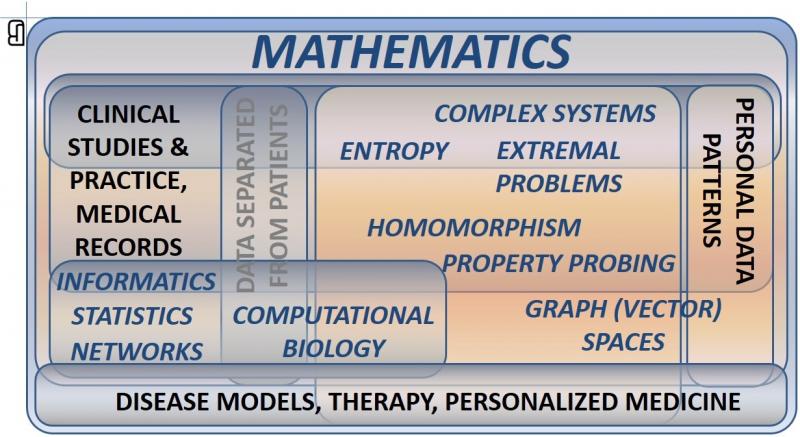_________________________________________________________________________________________________________________________________________________________________

Representative results for predicting complications after surgical stent insertion by Personalized Network Medicine processing of electronic medical records.

PNM provides individual risk ratio of post-procedure complications and quantitative model for "What if" simulation of personal, environmental and clinical factors impact on the complication risk.


See "EXAMPLE" section of this page for interactive implementation of PNM diagnostic model, identifying aggressive tumors ("Large", associated with ~ 2.7 times shorter survival) in hepatocellular cancer patients, using data from standard clinical screening (details can be found in our paper "Phenotypic Categorization and Profiles of Small and Large Hepatocellular Carcinomas").
Validation of the PNM diagnosis of liver tumor subtypes, example how PNM contributes to functional interpretation of the model and demonstration that HCC patients have different survival prognosis according to their PNM-tumor subtype is published in Seminars in Oncology (2014).
Third independent validation of the PNM HCC personalized tumor subtype diagnosis and relevance of the subtype identification for the survival prognosis is published in June 2014 issue 3 of Seminars in Oncology.

For application of PNM to predicting of the melanoma patients survival, see our PlosOne paper "A New Mathematical Model for the Interpretation of Translational Research Evaluating Six CTLA-4 Polymorphisms in High-Risk Melanoma Patients Receiving Adjuvant Interferon". Excel implementation of survival predicting model can be downloaded here.

Even phenotypes, whose conventional characterization is only qualitative or "intuitive" - such as metabolic syndrome, a risk factor for cardiovascular disease - are described rigorously and quantitatively using tools of Personalized Network Medicine. This novel, relationship-pattern based information then leads to succesful quantitative models which transform the global "significant associations" into directly clinically interpretable quantitative models. This allows for exact personalized predictions and realistic "what if" simulations.


